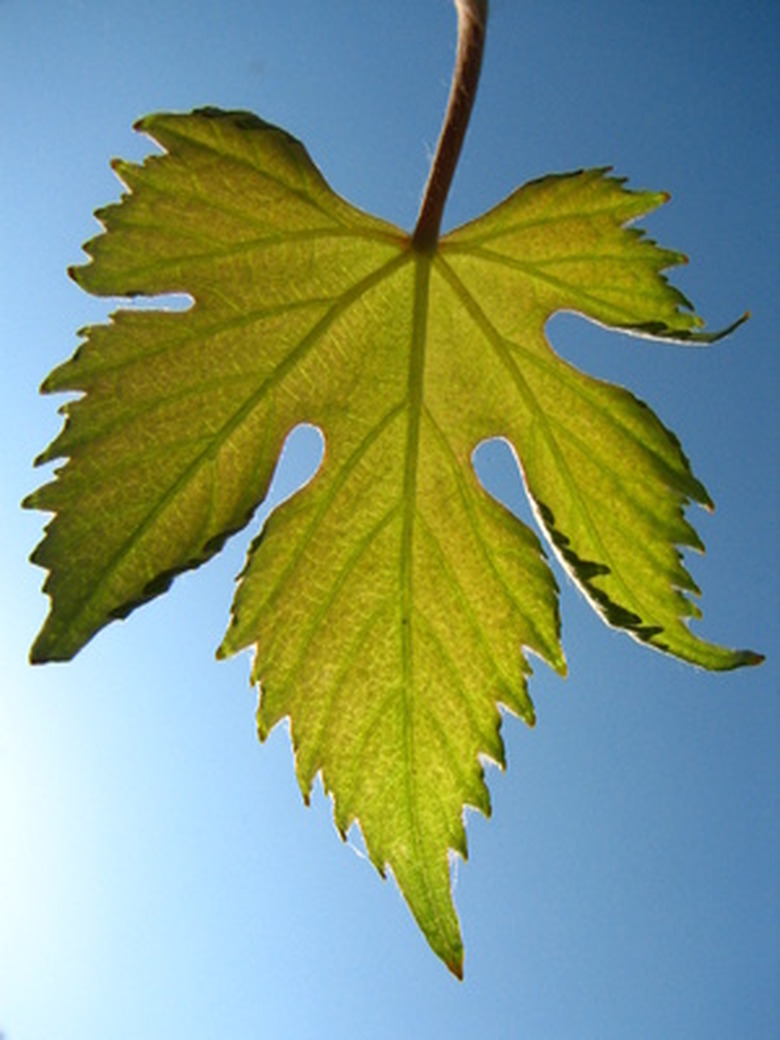Grape Leaf Identification
Grapevines thrive in vineyards around the world but can also flourish in the wild. Unfortunately, it can be hard to identify a grapevine unless the vine is heavy with a plump fruit harvest. The fruit harvest isn't the only thing grapevines are good for. The vines and leaves can be used to cook food on a grill, smoking meats with robust flavor. The main way to identify grapevines when they are dormant or very young is from their leaves, which have particular edges, colors and shapes.
Shape
Grape leaves can range from narrow with tapered points to wider shapes up to 8 inches in diameter, almost resembling a maple leaf. The leaves have three lobes and are consistently heart-shaped. The leaves have a jagged edge, which can range from a slight fine-tooth edge to edges that protrude to about 1/2 inch out. The leaves are not smooth and round. In winter, the leaves curl inward as they go dormant.
- Grapevines thrive in vineyards around the world but can also flourish in the wild.
- The main way to identify grapevines when they are dormant or very young is from their leaves, which have particular edges, colors and shapes.
Color
Grape leaves are a consistent light to medium green during spring and summer. When colder seasons approach, though, they turn to dark purple or brown. The color also depends on the type of grapevine. For example, darker grapes usually have a darker hue to the leaves.
Flowers
Greenish-white flowers bloom during the summer months, growing outward from the leaves in clusters and emitting a sweet scent. These flowers occur right before the fruit starts to grow and ripen.
Characteristics
The underside of the leaves have fuzz like a peach that cover the surface, which grows down onto the stems. Curly tendrils grow from the base of the leaves once they are mature grapevines. On younger vines, the tendrils are a lighter green hue than the rest of the grapevine and are more common in the foliage. The tendrils are a surefire way to distinguish the grapevine from other plants.
- Grape leaves are a consistent light to medium green during spring and summer.
- On younger vines, the tendrils are a lighter green hue than the rest of the grapevine and are more common in the foliage.
Cell Structure
Examine the leaves closely to see the cell structure. The closer together the veins run, the more likely it is a wine grape plant. The close-running structure should be straight and running evenly out onto the surface of the leaf.
